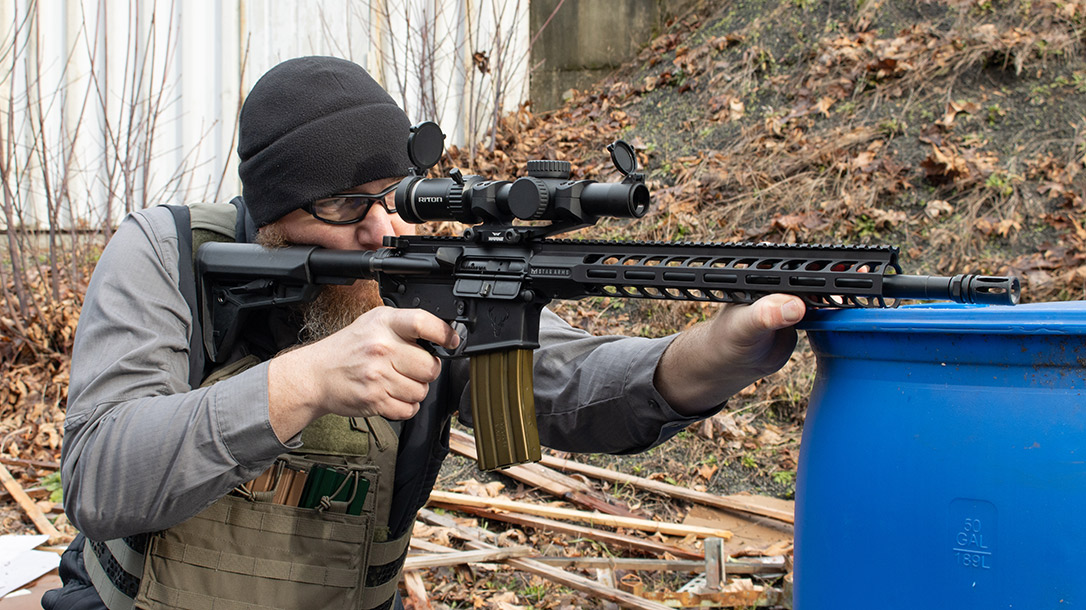To say the AR-15 market is saturated would be an understatement. From mild to wild, rifle variants can be found that will cost less than a month’s car payment. With some costing more than a couple months’ mortgage payments. This creates a very buyer-friendly market as companies compete for attention, with entries like the Stag Arms 15 Tactical.
The Stag Arms 15 Tactical
What can be daunting is deciding what makes for an all-around good buy. Ultra-affordable rifles have been known to have shorter lives due to low-grade components or construction. While at the same time some of the elite builds can be fussy (in terms of ammo brands and types). This is because they are built to operate within narrow parameters. Entering the largest segment of the market is the new Stag 15 Tactical. Built for those of us looking for an all-around solid rifle.
Stag Arms is smart about ARs—just ask anybody who owns one. I personally own a few, including a Stag 10S in .308, which I ran through a four-day carbine course. Also, a Stag Varminter that shoots sub-MOA groups with plinking ease. Finally, my home-built “’Merigun,” assembled using one of Stag’s builder sets. All three have exceeded expectations and remain benchmarks in my collection as guns to compare others against.
Advertisement — Continue Reading Below
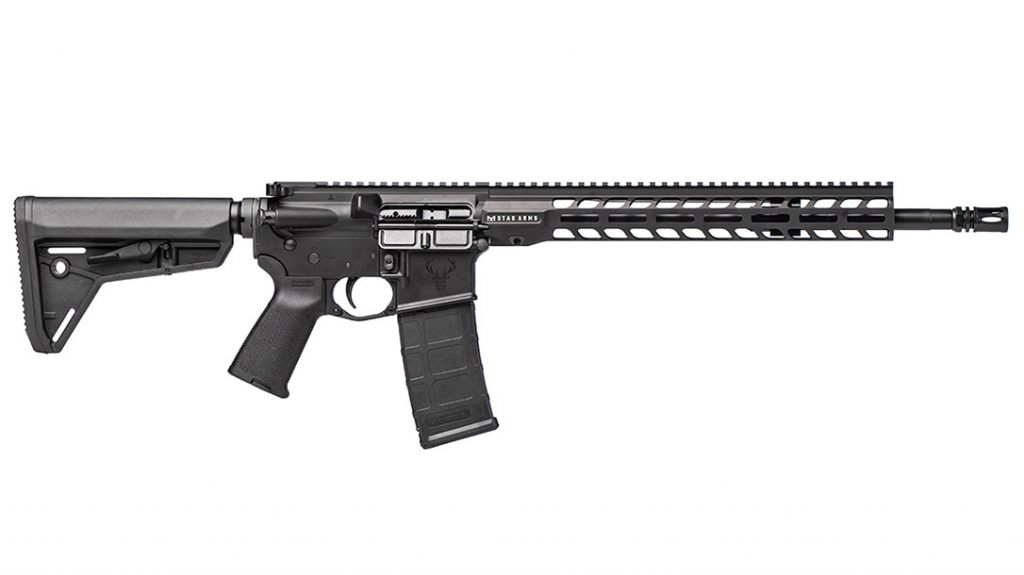
It was my experience with these older Stag builds that made me want to try the new Stag 15 Tactical. “New” is an abused term, but in the case of Stag Arms it’s truly applicable. As an example of one of the most American things a firearms manufacturer has done in recent history, Stag Arms relocated from the restricted civil right state of Connecticut to freedom-loving Wyoming.
That move meant a new facility, new machines, new staff and of course, a change to roll markings. Those familiar with Stag Arms rifles will note not only the new location, but also the company’s new, edgier logo. As well as the inclusion of a receiver tensioning screw.
Advertisement — Continue Reading Below
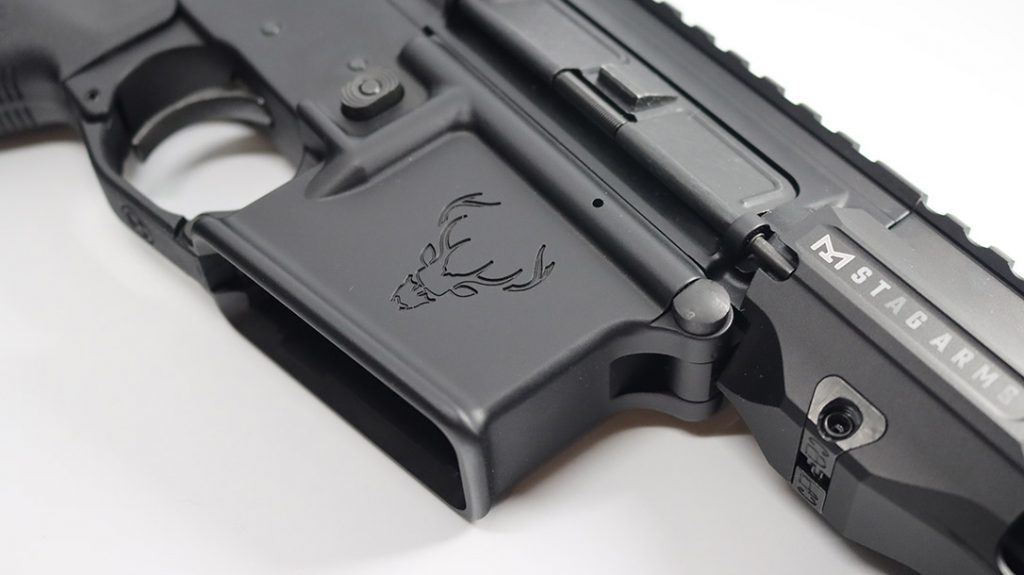
Strategically Built
“Tactical” is a word overused ad nauseam in our industry. So much so that some of us have resorted to avoiding anything labeled with the term. Only for fear that it’s just another attempt to make something cool by adding the “T word” to the name. I trusted that Stag would not be a company to do that. After reviewing the Stag 15 Tactical, I am pleased to be correct.
“Tactical” is loosely defined as showing skillful planning or aim, at an end beyond the immediate action. What makes a rifle “tactical” is up to the end-user. But to fit my definition it must be a rifle built for hard use in a fighting capacity. A rifle that can survive a training course, without becoming the subject of that training. A tactical rifle is one to be relied upon, not only to fire when needed, but also to ensure that those shots land where intended. The rifle should be ready for action out of the box and be able to survive less-than-ideal conditions.
Advertisement — Continue Reading Below
The Details
While many ARs look and feel the same, it is in the details that any difference is made. That’s where Stag Arms has done their homework. The barrel is arguably the centerpiece of any rifle. How well the rifle stands up abuse and remain effective, as well as its accuracy and longevity, are all barrel-centric.
Stag starts with the 4150 steel, 1-in-7-inch twist and government profile proven tough enough for the U.S. military for years. They then step things up with a softer-shooting, mid-length gas system and optional black nitride coating. Unlike chrome lining, which can lack consistency and wears with use, black nitride hardens the surface of the metal. The only way to remove black nitride is to physically remove metal. As a result, black nitride can result in sharper rifling and a smoother bore surface and does not risk altering the dimensions of the gas port. Black nitride also coats the outside of the barrel for corrosion resistance.
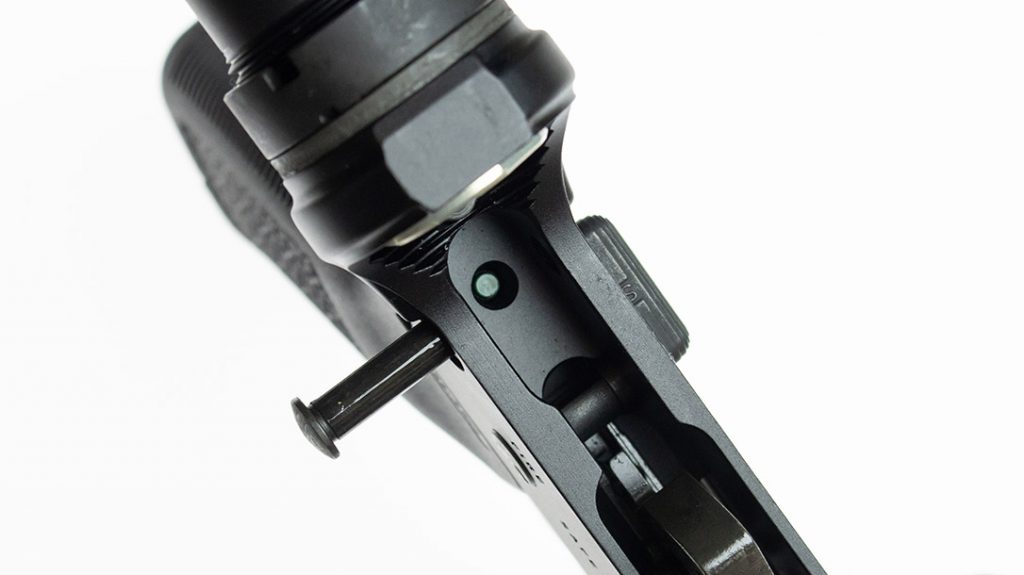
Advertisement — Continue Reading Below
The bolt carrier group is also available with the easy-to-clean, super-slick black nitride coating. Stag retains the option for purists to have their barrel chrome-lined and phosphate-coated, as well as the bolt carrier group. But for our test we went with the more modern black nitride option. Less break-in time and easier cleaning were our tactical choices. The magnetic particle inspected (“MPI”) markings on the bolt tell us that it has gone through an extra step to weed out bolts that may not have the integrity necessary for hard use.
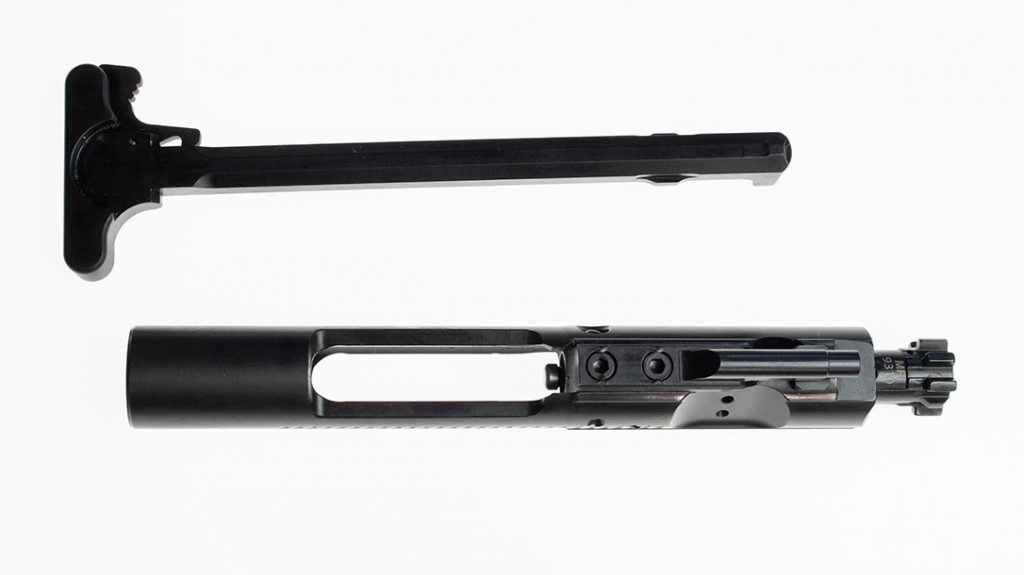
Shooting Comfort
Keeping things tactile, Stag uses their 13.5-inch Slimline M-LOK handguard. The Slimline is lightweight and true to its name. While providing 21 M-LOK slot opportunities to make it broader or heavier. A 13.5-inch handguard on a 16-inch barrel provides a nice balance of protective real estate and weight management. All told, the rifle weighs just 6.3 pounds. Once again, balancing reduced weight for quick pointing and retaining enough mass for soft shooting.
Advertisement — Continue Reading Below
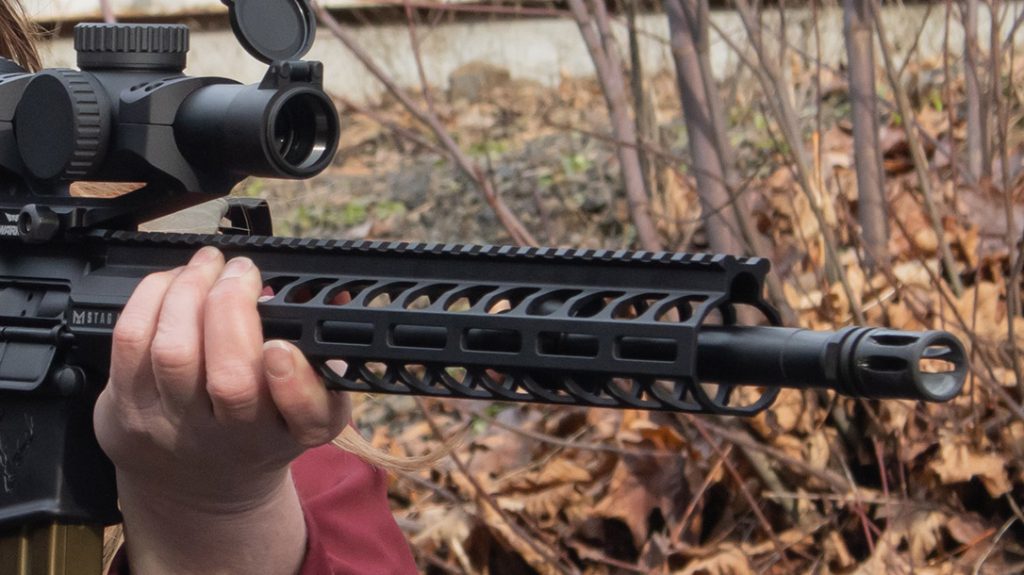
That soft-shooting characteristic is reinforced by the mid-length gas system. While few people (save an overly dramatic news reporter or two) have ever complained about the recoil of 5.56mm ammo, smooth shots make for quick follow-up shots and enhance any experience—training, bench shooting or in defensive use.
Rounding out the furniture are a Magpul MOE SL Stock, Magpul Enhanced Trigger Guard and Magpul MOE pistol grip. It should come as no surprise that the included magazine (in free states) is also a Magpul Gen M2 PMag. The trigger is a mil-spec, single-stage unit. Overall, the rifle feels and handles the way a modern AR should.
Advertisement — Continue Reading Below
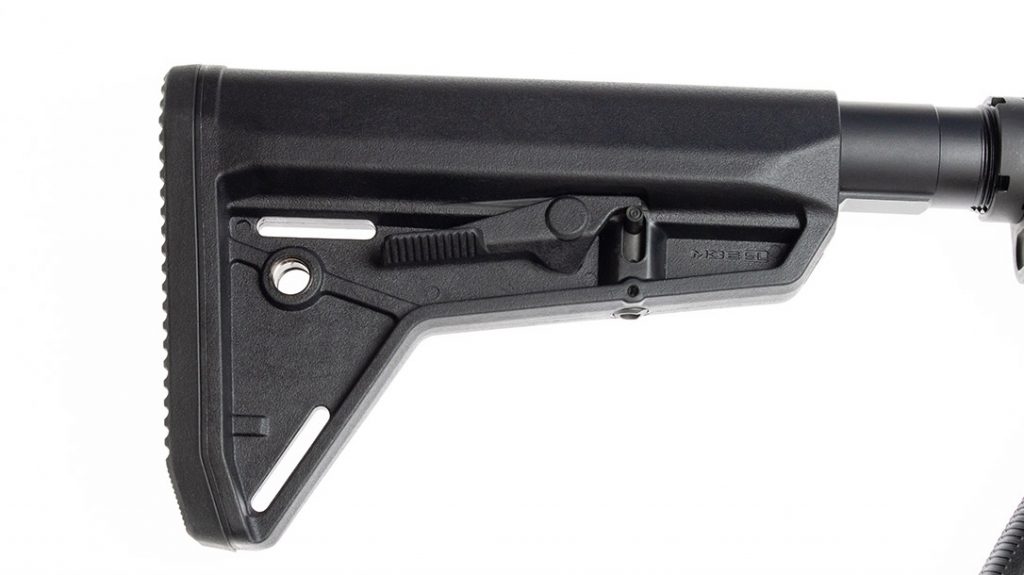
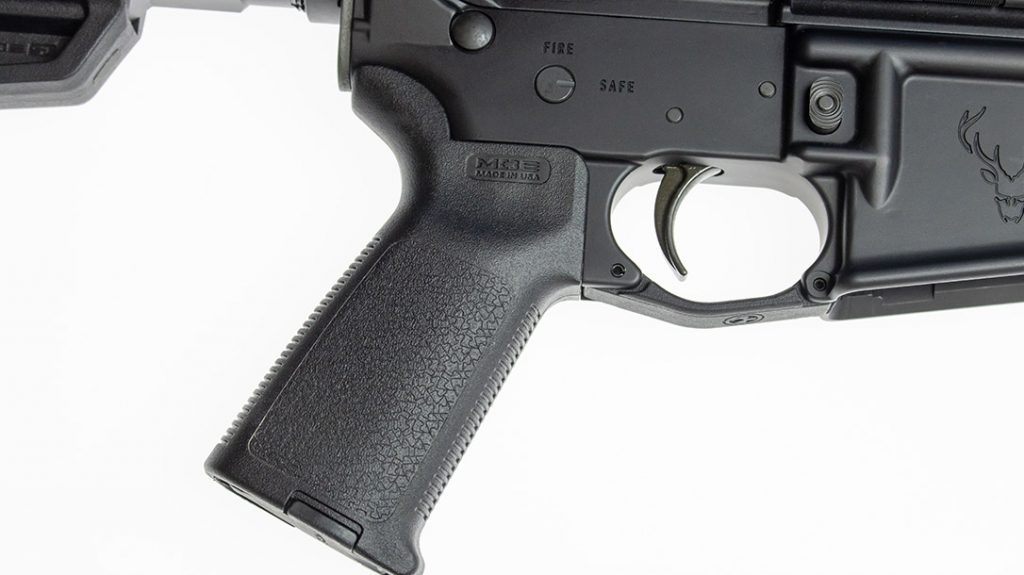
Deployment Ready
Ammunition shortages have hurt us all this past year, and it’s even worse for those who need to shoot weekly. A personal shortage of ammunition made a great test of a nitride barrel’s ability to run fresh from the start. We used just a handful of rounds for zeroing before testing the rifle’s accuracy with a variety of loads.
Advertisement — Continue Reading Below
It’s my belief that regardless of twist rate, pedigree or range lore, a good rifle will shoot well with a variety of loads. We fired five-shot groups at 100 yards of six different loads of .223 Rem and 5.56mm NATO ammo with projectiles ranging in weight from 35 to 73 grains. In the spirit of real-world use, a simple rear bag and front rest were used. Unfortunately, wet and dark Oregon weather prevented the use of a traditional chronograph. Our LabRadar managed to capture only one of 40 attempts, so no usable velocity readings were captured.
The rifle undoubtedly favors the lighter loads and matches well with the 55- and 62-grain loads. These loads are most commonly found in training use and previously on store shelves. Zero malfunctions of any kind were experienced. The mid-length gas system and black nitride bolt carrier combined for silky smooth operation.
Taking it Further
To take standard rifle tests a step further, we included our “cold and hot” test. This test has not been conducted enough times to rank one rifle against another. However, it does serve to evaluate the potential of a rifle to serve well in tactical applications.
Advertisement — Continue Reading Below
For this test, a group of five shots is fired, then 20 rounds of ammunition rapidly expended. This is followed immediately by another five-shot group. The intent is to heat the barrel rapidly between groupings and see how this affects the barrel. How quickly the barrel temperature changes is the result of many variables, including ambient temperature, and serves as supplementary information.
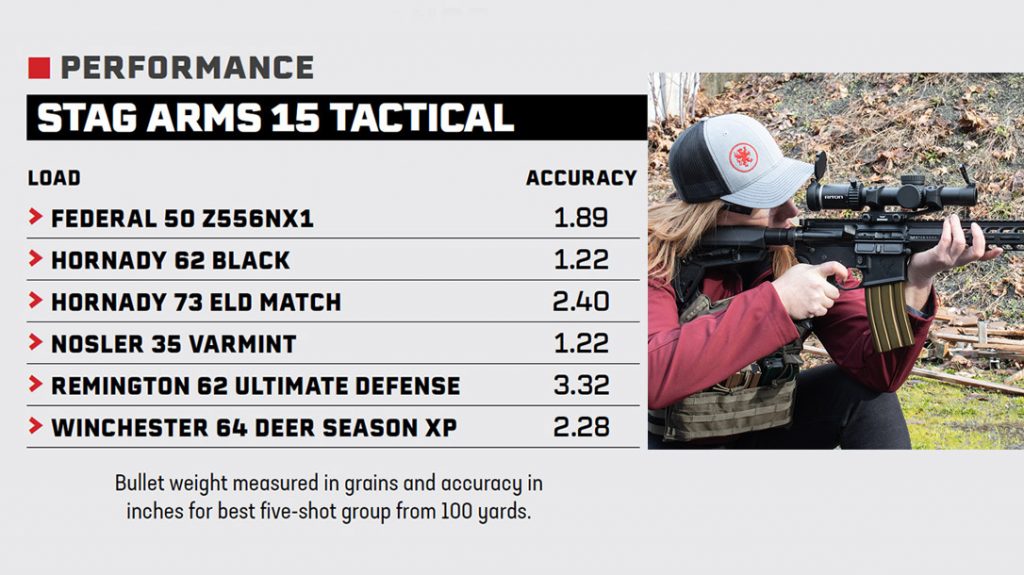
Interesting data points are point of impact shift (a result of the barrel changing shape with expansion) and group dispersion. Dispersion can be caused by shooter error amplified by mirage but also indicates the barrel’s ability to handle the heat.
With an ambient temperature of 40 degrees and the barrel already warm from shooting, the 20-round dump of full-house 5.56mm raised barrel temp (measure at the muzzle) from 55 F to 107 F. The second group was shot at a moderate pace (five shots in 40 seconds), and ended with an external barrel temp of 75 F.
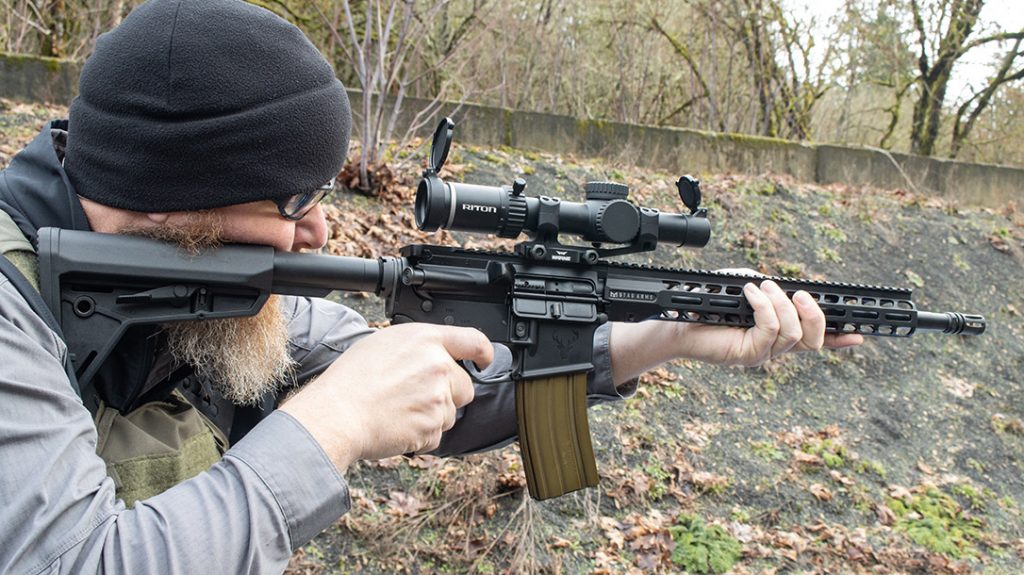
The 100-yard “cold” group of non-match ammo measured 1.89 inches and the “hot” group 3.67 inches. The point of impact shifted downward by 1.0 inch. This test is by no means an industry benchmark. But the results indicate that the Stag Arms 15 Tactical is ready to fight and provides reliable accuracy under duress.
Tactical Decision
Does the Stag 15 Tactical live up to its name? In our experience, the answer is yes, in a couple of ways. First and foremost, the rifle is a quality build with components that warrant changing only for personal preference. If one were to choose one AR-15 to serve through learning, training, range sessions and for self-defense, the Stag 15 Tactical fits the bill.
As a potential fighting rifle, the Stag 15 Tactical provides 100 percent reliability with a wide range of loads. It performs well with the most common bullet weights, while providing accuracy beyond what is needed at defensive distances. Stag’s lifetime warranty and Infinite Shot Barrel Guarantee add nice peace of mind on a rifle designed for hard use.
For more information visit StagArms.com.
Stag Arms 15 Tactical Specs
Caliber: 5.56mm NATO
Barrel: 16 inches
OA Length: 32.5 to 35.5 inches
Weight: 6.3 pounds
Stock: Magpul MOE SL
Sights: None
Action: Semi-auto
Finish: Black nitride or mil-spec phosphate
Capacity: 30+1
MRSP: $1,169
This article was originally published in the Personal Defense World Aug/Sept 2021 issue. Subscription is available in print and digital editions at OutdoorGroupStore.com. Or call 1-800-284-5668, or email subscriptions@athlonmediagroup.com.
